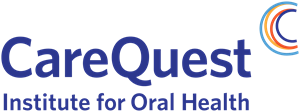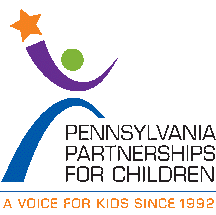
The U.S. Department of Health and Human Services (HHS), through its Centers for Medicare & Medicaid Services (CMS), is expanding access to behavioral health care, cancer screening coverage, and dental care. The Calendar Year 2023 Physician Fee Schedule (PFS) final rule announced today also promotes innovation and coordinated care in the Medicare program through Accountable Care Organizations (ACOs). This rule directly supports President Biden’s Cancer Moonshot Goal to cut the death rate from cancer by at least 50% and also supports the Administration’s commitment of strengthening behavioral health, which the President outlined in his first State of the Union Address and the comprehensive strategy to tackle the nation’s mental health crisis, which HHS leaders have furthered through the National Tour to Strengthen Mental Health.
“The Biden-Harris Administration is committed to expanding access to vital prevention and treatment services,” said HHS Secretary Xavier Becerra. “Providing whole person support and services through Medicare will improve health and wellbeing for millions of Americans and even save lives.”
“Access to services promoting behavioral health, wellness, and whole-person care is key to helping people achieve the best health possible,” said CMS Administrator Chiquita Brooks-LaSure. “The Physician Fee Schedule final rule ensures that the people we serve will experience coordinated care and that they have access to prevention and treatment services for substance use, mental health services, crisis intervention, and pain care.”
“Together, we are building a stronger Medicare program,” said Deputy Administrator and Director for the Center for Medicare, Dr. Meena Seshamani. “No matter who you are, or what diagnoses you have, these changes will help ensure that Medicare treats the whole person— caring for physical health, behavioral health, and social needs that are integral to health— and ensuring access to the high-quality care all people deserve.”
Coverage for Behavioral Health Services and Opioid Use Disorder Treatment
In line with the 2022 CMS Behavioral Health Strategy, CMS is strengthening access to vital behavioral health services. CMS is making it easier for Medicare beneficiaries to get behavioral health services, by allowing behavioral health clinicians like licensed professional counselors and marriage and family therapists to offer services under general (rather than direct) supervision of the Medicare practitioner. Medicare will pay Opioid Treatment Programs that use telecommunications with patients to initiate treatment with buprenorphine. CMS is also clarifying that Opioid Treatment Programs can bill for opioid use disorder treatment services provided through mobile units, such as vans, in accordance with Substance Abuse and Mental Health Services Administration (SAMHSA) and Drug Enforcement Administration (DEA) guidance. These policies may increase access in rural and other underserved areas.
CMS is also finalizing policies to pay for clinical psychologists and licensed clinical social workers to furnish integrated behavioral health care as part of a primary care team. Finally, Medicare will provide a new monthly payment for comprehensive treatment and management services for patients with chronic pain. These new services offer a whole-person approach to care.
Expanding and Enhancing Accountable Care
CMS is finalizing changes to the Medicare Shared Savings Program, the nation’s largest Accountable Care Organization program, covering more than 11 million people with Medicare and including more than 500,000 health care providers. These policies represent some of the most significant reforms since the program was established in 2011, and the first Accountable Care Organizations (ACOs), which are groups of health care providers who come together to give coordinated, high-quality care to people with Medicare, began participating in 2012. Through these policies, which are central to the Medicare Value-Based Care Strategy, CMS will take important steps toward our 2030 goal of having 100% of Traditional Medicare beneficiaries in an accountable care relationship with their healthcare provider by 2030. CMS is finalizing proposals to incorporate advance shared savings payments to certain new ACOs that can be used to support their participation in the Shared Savings Program, including hiring additional staff or addressing social needs of people with Medicare. CMS is also finalizing a health equity adjustment to an ACO’s quality score, revising the benchmarking methodology, and allowing longer periods of time for ACOs to become accustomed to accountable care before being liable for downside risk, all of which are expected to increase participation in rural and underserved areas.
Reducing Barriers and Expanding Coverage for Colon Cancer Screening
Colon and rectal cancers continue to be a leading cause of death in the United States with even higher new cases and death rates for Black Americans, American Indians, and Alaska Natives. Medicare will now reduce the minimum age for colorectal cancer screening from 50 to 45 years, in alignment with recently revised policy recommendations by the U.S. Preventive Services Task Force. Additionally, Medicare will now cover as a preventive service a follow-on screening colonoscopy after a non-invasive stool-based test returns a positive result, which means that beneficiaries will not have out-of-pocket costs for both tests.
Finalizing Payment for Dental Services that are Integral to Covered Medical Services
CMS is codifying current policies in which Medicare Parts A and B pay for dental services when that service is integral to treating a beneficiary’s medical condition. Medicare will also pay for dental examinations and treatments in more circumstances, such as to eliminate infection preceding an organ transplant and certain cardiac procedures beginning in CY 2023 and prior to treatment for head and neck cancers beginning in CY 2024. Finally, CMS is establishing an annual process to review public input on other circumstances when payment for dental services may be allowed.
Payment Rates for CY 2023
The CY 2023 PFS conversion factor is $33.06, a decrease of $1.55 to the CY 2022 PFS conversion factor of $34.61. This conversion factor reflects the statutorily required update of 0% for CY 2023, expiration of the temporary 3% supplemental increase in PFS payments for CY 2022 provided by the Protecting Medicare and American Farmers From Sequester Cuts Act, and the statutorily required budget neutrality adjustment to account for changes in payment rates.
For a fact sheet on the CY 2023 Physician Fee Schedule Final Rule, please visit: https://www.cms.gov/newsroom/fact-sheets/calendar-year-cy-2023-medicare-physician-fee-schedule-final-rule
For a fact sheet on final changes to the CY 2023 Quality Payment Program, please visit: https://qpp-cm-prod-content.s3.amazonaws.com/uploads/2136/2023%20Quality%20Payment%20Program%20Final%20Rule%20Resources.zip
For a fact sheet on final changes to the Medicare Shared Savings Program, please visit: https://www.cms.gov/newsroom/fact-sheets/calendar-year-cy-2023-medicare-physician-fee-schedule-final-rule-medicare-shared-savings-program
For a CMS blog on behavioral health polices, please visit: https://www.cms.gov/blog/strengthening-behavioral-health-care-people-medicare-0?check_logged_in=1
To view the CY 2023 Physician Fee Schedule and Quality Payment Program final rule, please visit: https://www.cms.gov/files/document/cy2023-physician-fee-schedule-final-rule-cms-1770f.pdf
 A new index is designed to assess the “recovery environment” in each U.S. county. The Index from the Center for Rural Health Research at East Tennessee State University called the Recovery Ecosystem Index Mapping Tool drills down to the county level to assess drug recovery systems across the country. The tool provides information on the availability of different treatment options, support systems for people in recovery, and social factors such as housing costs, transportation, and more.
A new index is designed to assess the “recovery environment” in each U.S. county. The Index from the Center for Rural Health Research at East Tennessee State University called the Recovery Ecosystem Index Mapping Tool drills down to the county level to assess drug recovery systems across the country. The tool provides information on the availability of different treatment options, support systems for people in recovery, and social factors such as housing costs, transportation, and more.

 The CareQuest Institute for Oral Health released a visual report examining dental procedure utilization during the COVID-19 pandemic, using Medicaid and commercial insurance claims data to find differences in trends by age and insurance type. The authors note a need for the oral health profession to maintain a state of emergency readiness to be able to provide consistent care in the face of future public health emergencies.
The CareQuest Institute for Oral Health released a visual report examining dental procedure utilization during the COVID-19 pandemic, using Medicaid and commercial insurance claims data to find differences in trends by age and insurance type. The authors note a need for the oral health profession to maintain a state of emergency readiness to be able to provide consistent care in the face of future public health emergencies.




